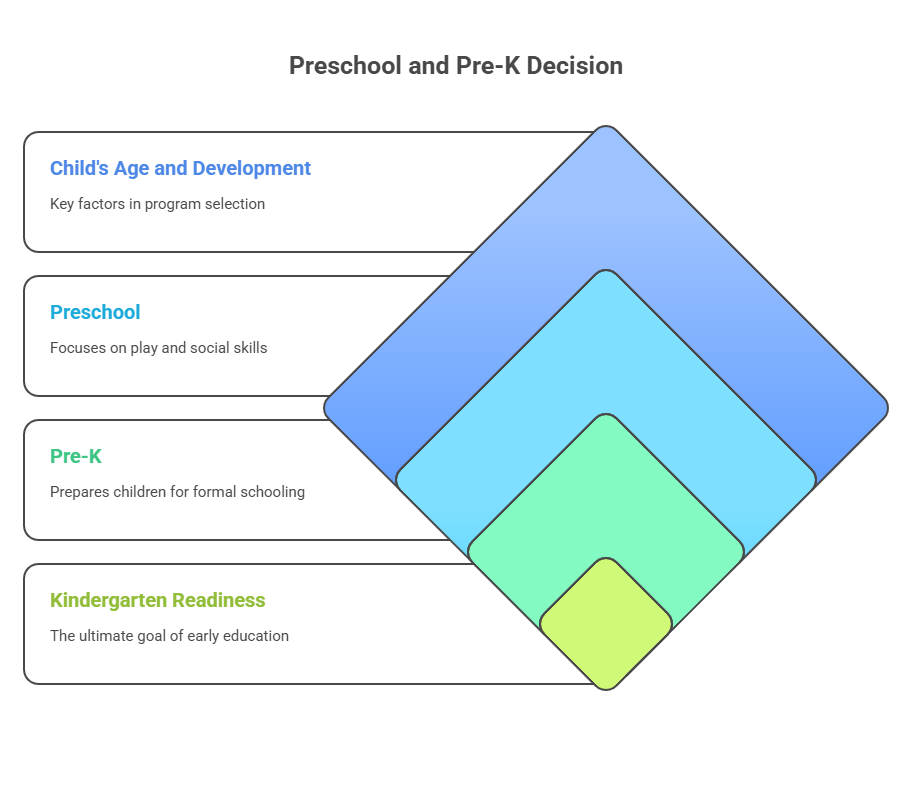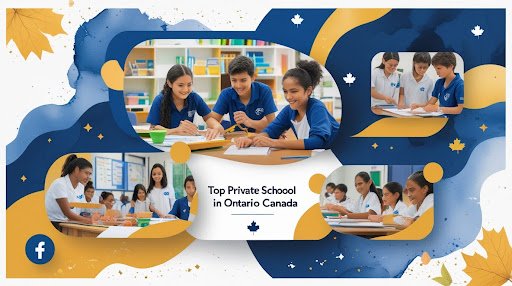Key Highlights of pre k age
- The pre k age is for kids who are four years old, or who will turn four in the school year. But, the age that each program accepts can change a lot from place to place.
- Prekindergarten is important in early childhood education. It helps kids build school readiness skills in a planned setting.
- Each province in Canada and every state in the United States has its own way of setting enrollment rules and cutoff dates for pre-k.
- Early learning milestones and steps in cognitive development help show if a child is ready for preschool and pre-k programs.
- Parents need to look over readiness checklists and learn about how to enroll to make sure their child is ready at the right time.
- Families should look at public, private, and Montessori programs before picking a pre-k curriculum that fits their child best.
Introduction
Every parent wants to give their child the best start in the early childhood years. It is important to know the pre k age range for success in early childhood education. In 2025, if you choose a preschool program for your child, it can help with their growth at school and with friends. The pre-k age is an important time. At this age, kids learn the skills they will need when they go to kindergarten and after that. This guide will help you understand the pre-k age range. It will also talk about the good things early childhood education gives your child, and let you know what to look for when thinking about school readiness and preschool program choices.
Understanding Pre-K Age in Canada
Finding out if your child can join pre-k is not just about the birthday. The rules for the age range and kindergarten change in different places, so preschool admission needs you to pay close attention. Parents have to know the kindergarten program rules and what kids need at this age before they choose enrollment. When you learn about pre-k age and see how it works with kindergarten, you help your kid move to their next stage well.
Definition of Pre-K and Its Purpose
Prekindergarten, or pre-k, is an early childhood education program. It is made for children who are just under the age for kindergarten. The goal of prekindergarten is to help kids move from simple early childhood experiences to a more organized elementary school setting. In prekindergarten, children grow their social, emotional, and thinking skills. The learning is fun and focuses on play and small projects which help the children ask questions and work together with others.
Pre-k is different from regular preschool. The prekindergarten curriculum gets children ready for kindergarten. They do activities that help with language skills, solving problems, and learning to think on their own. In the United States, most children start pre-k at age four, right before they go to kindergarten. This important year is about helping kids get used to being with a group. It helps them get ready for the work coming up in elementary school. Early education in prekindergarten lays a strong base for the rest of their school years.
Typical Age Range for Pre-K Enrollment in 2025
In 2025, the pre k age is for kids who are four years old or will turn four by a set date during the school year. Still, the age range for joining a prekindergarten program can be different. It depends on where you live and the rules of your area. Many places want kids to be at least 4 years old by September or October of the enrollment year. This can change when and if your child can register.
You should know that some provinces or states let younger kids join prekindergarten. They often allow this if your child meets certain readiness or developmental guidelines. If you are wondering, “How does pre k age eligibility differ between states or provinces?” the answer is it depends on what the local rules say. Some areas give a chance for transitional kindergarten to kids who turn five later in the school year. It is good to look into your local school district if you want to know the registration steps and requirements. This way, you will know if your child can go into a prekindergarten program and get a good start with early learning.
Age Eligibility and Regional Differences
Age eligibility for pre-k programs depends on provincial and state rules. This means that registration and enrollment can be different depending on where you live. Some places want children to be a certain age when the school year begins. Other places may let children start at different times, giving more choices.
Parents need to understand these provincial rules for preschool admission. It helps when you want to enroll your child in early childhood education. If you look at your local requirements, it is easier to work out your child’s eligibility. This way, you can find a preschool program that matches your child’s needs and stage of development.
Provincial Cutoff Dates and Requirements
Provincial cutoff dates play a decisive role in preschool admission and enrollment, with each region setting its own rules for when a child qualifies for pre k based on their birthdate. Parents frequently ask, “What are the cutoff dates for pre k enrollment based on birthdate in my region?” The answer is best illustrated by a text table comparing key provinces:
| Province/State | Cutoff Date for Pre K Enrollment | Minimum Age Requirement | Notes |
| Ontario | December 31 | 4 years old | Must turn 4 by cutoff date |
| Alberta | September 1 | 4 years old | Alberta Education standard |
| British Columbia | December 31 | 4 years old | Flexible registration |
| Texas (U.S.) | September 1 | 4 years old | Public school eligibility |
| New York (U.S.) | December 1 | 4 years old | Universal pre-k program |
Parents should always verify local requirements for preschool admission and ensure all paperwork is complete before the school year begins.
Comparing Canadian and U.S. Pre-K Age Guidelines
Looking at canadian and u.s. pre-k programs shows that there are clear differences in the way age eligibility and curriculum are set. In canada, rules like alberta education say a child must be four by september 1 to join public school pre-k programs. texas also uses this september cutoff for its prekindergarten classrooms.
If you wonder, “how does the age for starting pre-k compare in canada to the u.s.?” you can see the u.s. often gives families access to universal or state-funded pre-k programs. sometimes, there is more flexibility for children who will turn four later in the school year. Canada works with provincial rules instead. both public and private options exist there. these differences affect the time for registration, what each curriculum covers, and how children are checked for readiness. that is why parents should always look into their local options and find the best early education and public school start for their child.
Preschool vs. Pre-K: Key Age and Program Differences
Preschool and pre k programs both play a big part in early childhood education. When you look at them, you see they have some things in common but also have their own goals and age rules. Preschool is for younger kids, and pre k is for kids who will start kindergarten soon. Knowing how preschool and pre-k are different, plus learning about the benefits of pre k, helps parents choose what is best for their child. Looking at the preschool age range and pre-k gives families a clear idea about which place will help their child get ready for school and early learning. This way, kids get to learn well and be ready for kindergarten.
Distinctions in Age Requirements
Age rules are one key way preschool and pre-k programs are different. Preschool takes in kids who are between about 2.5 and 4.5 years old. This makes preschool good for both toddlers and those who are just starting to learn in a school setting. Prekindergarten, or pre-k, is for children who are four or about to turn four during the school year. This matches up well with what children need before they start kindergarten.
Parents sometimes want to know, “What is the main difference in how old children can be for preschool and pre-k programs?” Preschool gives young children early education and child care for a wide age range. So, both smaller kids and those a little older get support. Prekindergarten aims to get children ready for elementary school. The curriculum helps build important language skills, thinking, and social skills. Eligibility for each program depends on your child’s birthdate, and the rules set by your local district. It’s important to check your area’s school year policies before you sign up.
Deciding Between Preschool and Pre-K Based on Age

Choosing between preschool and pre-k means looking at your child’s age, stage of development, and how ready they are for new learning. Many parents ask, “Should I choose preschool or pre-k, and what are the benefits of each? Here are a few things to think about:
- Preschool is a good fit for kids who are 2.5 to 4 years old. It focuses on play and early social skills.
- Pre-k suits children who are almost ready for kindergarten. Kids do a bit more in these classes to get them ready for school.
- In pre-k programs, children practice early learning milestones, like letters, numbers, and working with others.
- The benefits of pre-k are easy transitions to elementary school and kids feeling more sure of themselves in groups.
The best way to pick is to look at your child’s current skills. Think about how comfortable they are around other people. Both preschool and pre-k help your child grow, but pre-k gives that last bit of readiness before kindergarten.
Assessing School Readiness Beyond Age
School readiness is not just about your child being the right age for prekindergarten. The early learning milestones matter too. Things like how your child thinks, how they show feelings, and how they use words have the most impact on readiness. You should watch for signs of independent thinking in your child. Pay attention to how well they handle changes and if they show excitement about new things. Knowing about these signs will help you make sure your child moves to prekindergarten in a good and smooth way. This makes their time in school better and helps their growth fit their own skills and needs. Early learning and being ready helps your child enjoy and do well in prekindergarten.
Developmental Milestones for Pre-K Entrants
Children who start pre-k need to show some signs that they are ready to learn and grow. These early learning milestones help show if your child has what is needed for prekindergarten. They are linked to things like cognitive development, emotional skills, how your child talks, and how they move or do things with their hands. Parents may ask, “What helps a child be ready for pre-k besides age?” Look at these important points:
- Cognitive: Drawing a person with different body parts. Noticing simple patterns in stories or colors.
- Emotional: Understanding what others feel. Changing how they act in different places.
- Language: Talking in full sentences. Answering questions and talking about what happened during the day.
- Physical: Using a pencil or crayon to draw. Catching a ball. Doing things like buttoning clothes or pouring water.
If your child does well with most of these early learning milestones, they can probably handle prekindergarten. But if they find some of this hard, your child may need more help, or time in a preschool, before moving up. This will help with their readiness and give them a good start.
Parental Checklists and Expert Insights for Readiness
Assessing if your child is ready for pre-k is more than looking at age or what skills they have. You need to understand how they grow overall. Many experts say parents should use checklists to look at readiness for school and child care. Some important things to notice are:
- Independence when doing day-to-day things like dressing, feeding, or using the bathroom.
- Doing well with simple instructions and joining group activities.
- Showing feelings clearly and making friends.
- Being happy to learn new things and try new activities.
Donna Couchenour, an early childhood educator, says, “School readiness is a mix of thinking skills, feelings, and how we act with others, not just how old we are.” Parents need to watch their kids over time. Talk to their teachers and, if needed, get help from a professional. This way, your child will do well in prekindergarten. They also get the most out of early education and child care as they grow.
Conclusion
In the end, it is important for parents to know the Pre-K age guidelines when thinking about early childhood education in 2025. When you know the meaning of Pre-K, its purpose, and the usual age ranges for kids, you can make good choices for your child. Take a look at the typical growth steps that children go through, too. If you check different programs, like public, private, or Montessori schools, and keep in mind that different places may have different eligibility rules, you will find the best one for your child.
It is important not to just look at age; you should also check if your child seems ready. Parent checklists and tips from experts can help you get your child set for this big step in early childhood. If you want to learn more or get custom advice, you can book a free talk with our education experts today.
Frequently Asked Questions
1. Can my 3-year-old attend Pre-K in Canada?
In Canada, kids usually start pre-k at the age of four. Some preschools may let younger children join if they are ready and meet preschool age rules. Most public schools ask that children be four years old by a certain date in the school year for prekindergarten enrollment.
2. Is my nearly 5-year-old eligible for Pre-K or Kindergarten?
A child who is almost five can go to either prekindergarten or kindergarten. It depends on the rules for eligibility and registration where you live. Most of the time, if kids turn five before the set date for the school year, they will start kindergarten. If they are still younger, they will stay in prekindergarten for that year.
3. Are there free Pre-K programs for certain ages?
Many parts of the country have pre-k programs for young children. These programs can be free or paid for by the government. Kids may be able to join if they fit in the right age range and live in the area. You have to look at local rules to know if your child can get early education in these programs. Enrollment will be open to families that meet the age and residency rules for pre-k programs.






